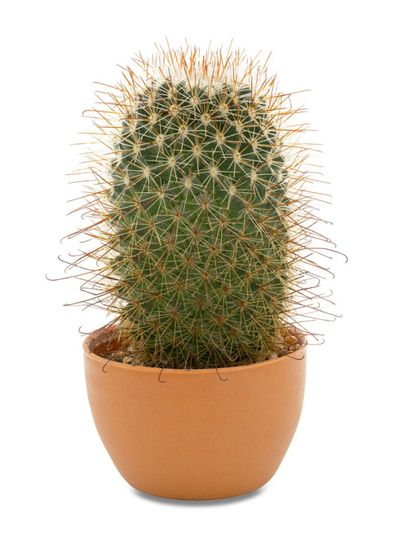Cactus enthusiasts love growing thumb cacti (Mammillaria matudae). They are diminutive but fit perfectly in dish gardens with other interesting succulents. Young plants are tidy columns but as they age, they tilt beguilingly and may add other stems for fascinating chaos. This native of Mexico is easy to grow and thrives where other plants cannot.
What is a Thumb Cactus?
The mammillaria thumb cactus is a drought-tolerant, heat-loving succulent. It hails from regions with low fertility and hot temperatures. The thumb cactus grows just 12 inches (30.5 cm.) tall in a smooth green column that is about one and a half inches (3 cm.) around. The central longer spines are reddish brown and surrounded by 18-20 short, white spines. In spring, the plant produces hot pink flowers that ring the top of the column. Each starry bloom is half an inch (1 cm.) across. Over time, the cactus will produce offsets, which can be divided away from the parent plant. Allow the cut end to callus and plant in well-draining soil for a brand new plant.
Soil and Site for Growing Thumb Cacti
As you might suspect, thumb cacti like sandy to gritty, well-draining soil. There is no need to worry about fertility as the cacti are adapted to low-nutrient situations. Plant outdoors in warm regions or use it as a houseplant that you can move outside in the summer. Purchased cactus soil is ideal but you can also make your own. Mix together one part soil, one part sand or gravel, and one part perlite or pumice. Situate the plant in full sun indoors. Outside, provide some shelter from the hottest rays of the day which can cause sunscald.
Thumb Cactus Care
There are really no tricks for growing thumb cacti. They truly thrive on neglect. Water them when the soil is mostly dry. Give them a nice deep watering but don’t let containers sit in a dish of water which might cause root rot. In the winter, suspend watering nearly entirely because the plant is dormant and not actively using much moisture. Cool temperatures in winter will encourage flowering. Fertilize with a diluted cactus food as growth resumes in early spring. Once should be sufficient. Repot as needed but thumb cacti prefer to be crowded and usually only need repotting once offsets arrive.
